-
EXECUTIVE SUMMARY 14
-
MARKET ATTRACTIVENESS ANALYSIS 15
- GLOBAL ATHLEISURE MARKET, BY PRODUCT TYPE 16
- GLOBAL ATHLEISURE MARKET, BY END USER 17
- GLOBAL ATHLEISURE MARKET, BY DISTRIBUTION CHANNEL 18
- GLOBAL ATHLEISURE MARKET, BY REGION 19
-
MARKET INTRODUCTION 20
-
DEFINITION 20
-
SCOPE OF THE STUDY 20
-
RESEARCH OBJECTIVE 20
-
MARKET STRUCTURE 20
-
KEY BUYING CRITERIA 21
-
RESEARCH METHODOLOGY 22
-
RESEARCH PROCESS 22
-
PRIMARY RESEARCH 23
-
SECONDARY RESEARCH 24
-
MARKET SIZE ESTIMATION 24
-
FORECAST MODEL 26
-
LIST OF ASSUMPTIONS 27
-
MARKET DYNAMICS 28
-
INTRODUCTION 28
-
DRIVERS 29
- GROWING FITNESS-CONSCIOUS POPULATION 29
- PRODUCT INNOVATION WITH GROWTH OF THE APPAREL INDUSTRY 29
- DRIVERS IMPACT ANALYSIS 30
-
RESTRAINTS 30
- PREVALENCE OF THE UNORGANIZED SECTOR 30
- RESTRAINTS IMPACT ANALYSIS 30
-
OPPORTUNITIES 31
- INFLUENCE OF SOCIAL MEDIA AND INNOVATIVE MARKETING STRATEGIES 31
- INCREASED DEMAND FOR SUSTAINABLE AND ECO-FRIENDLY APPAREL 31
- GROWTH OF THE ORGANIZED RETAIL SECTOR IN ASIA-PACIFIC 31
-
CHALLENGES 32
- RAPIDLY CHANGING CONSUMER TRENDS 32
-
MARKET FACTOR ANALYSIS 33
-
VALUE CHAIN ANALYSIS 33
- RAW MATERIAL PROCUREMENT 34
- PROCESSING 35
- PACKAGING 35
-
SUPPLY CHAIN ANALYSIS 36
-
PORTER’S FIVE FORCES MODEL 37
- THREAT OF NEW ENTRANTS 38
- BARGAINING POWER OF SUPPLIERS 38
- THREAT OF SUBSTITUTES 38
- BARGAINING POWER OF BUYERS 38
- INTENSITY OF RIVALRY 38
-
IMPACT OF COVID-19 OUTBREAK ON GLOBAL ATHLEISURE MARKET 39
- IMPACT ON PRODUCTION 39
- IMPACT ON SUPPLY-CHAIN 39
- IMPACT ON PRICING 40
- IMPACT ON CONSUMER BUYING BEHAVIOR 40
- IMPACT ON ONLINE VS OFFLINE SALES 40
-
GLOBAL ATHLEISURE MARKET, BY PRODUCT TYPE 41
-
OVERVIEW 41
- GLOBAL ATHLEISURE MARKET ESTIMATES & FORECAST, BY PRODUCT TYPE, 2022-2030 42
-
LEGGINGS, TIGHTS, & JOGGERS 42
- LEGGINGS, TIGHTS, & JOGGERS: MARKET ESTIMATES & FORECAST, BY REGION, 2022-2030 42
-
HOODIES & SWEATSHIRTS 43
- HOODIES & SWEATSHIRTS: MARKET ESTIMATES & FORECAST, BY REGION, 2022-2030 43
-
SNEAKERS 44
- SNEAKERS: MARKET ESTIMATES & FORECAST, BY REGION, 2022-2030 44
-
SHORTS 44
- SHORTS: MARKET ESTIMATES & FORECAST, BY REGION, 2022-2030 44
-
SPORTS JACKETS 45
- SPORTS JACKETS: MARKET ESTIMATES & FORECAST, BY REGION, 2022-2030 45
-
SPORTS BRA 46
- SPORTS BRA: MARKET ESTIMATES & FORECAST, BY REGION, 2022-2030 46
-
YOGA PANTS 46
- YOGA PANTS: MARKET ESTIMATES & FORECAST, BY REGION, 2022-2030 46
-
OTHERS 47
- OTHERS: MARKET ESTIMATES & FORECAST, BY REGION, 2022-2030 47
-
GLOBAL ATHLEISURE MARKET, BY END USER 48
-
OVERVIEW 48
- GLOBAL ATHLEISURE MARKET ESTIMATES & FORECAST, BY END USER, 2022-2030 49
-
MEN 49
- MEN: MARKET ESTIMATES & FORECAST, BY REGION, 2022-2030 49
-
WOMEN 50
- WOMEN: MARKET ESTIMATES & FORECAST, BY REGION, 2022-2030 50
-
UNISEX 50
- UNISEX: MARKET ESTIMATES & FORECAST, BY REGION, 2022-2030 50
-
GLOBAL ATHLEISURE MARKET, BY DISTRIBUTION CHANNEL 52
-
OVERVIEW 52
- GLOBAL ATHLEISURE MARKET ESTIMATES & FORECAST, BY DISTRIBUTION CHANNEL, 2022-2030 53
-
STORE-BASED 53
- STORE-BASED: MARKET ESTIMATES & FORECAST, BY REGION, 2022-2030 53
-
NON-STORE-BASED 54
- NON-STORE-BASED: MARKET ESTIMATES & FORECAST, BY REGION, 2022-2030 54
-
GLOBAL ATHLEISURE MARKET, BY REGION 55
-
OVERVIEW 55
-
NORTH AMERICA 57
- US 59
- CANADA 61
- MEXICO 62
-
EUROPE 64
- GERMANY 66
- UK 68
- FRANCE 69
- SPAIN 71
- ITALY 72
- REST OF EUROPE 74
-
ASIA-PACIFIC 76
- CHINA 78
- JAPAN 80
- INDIA 81
- AUSTRALIA & NEW ZEALAND 83
- REST OF ASIA-PACIFIC 84
-
REST OF THE WORLD 86
- SOUTH AMERICA 88
- MIDDLE EAST 90
- AFRICA 91
-
COMPETITIVE LANDSCAPE 93
-
INTRODUCTION 93
- MARKET STRATEGY ANALYSIS 93
-
COMPETITIVE BENCHMARKING 94
-
KEY DEVELOPMENTS & GROWTH STRATEGIES 95
- ACQUISITION 95
- PRODUCT LAUNCH 95
- EXPANSION 96
- PARTNERSHIP 96
-
COMPANY PROFILES 97
-
UNDER ARMOUR, INC. 97
- COMPANY OVERVIEW 97
- FINANCIAL OVERVIEW 98
- PRODUCTS OFFERED 99
- KEY DEVELOPMENTS 102
- SWOT ANALYSIS 103
- KEY STRATEGIES 103
-
LULULEMON ATHLETIC 104
- COMPANY OVERVIEW 104
- FINANCIAL OVERVIEW 104
- PRODUCTS OFFERED 105
- KEY DEVELOPMENTS 110
- SWOT ANALYSIS 110
- KEY STRATEGIES 110
-
ADIDAS AG 111
- COMPANY OVERVIEW 111
- FINANCIAL OVERVIEW 111
- PRODUCTS OFFERED 112
- KEY DEVELOPMENTS 114
- SWOT ANALYSIS 115
- KEY STRATEGIES 115
-
HENNES & MAURITZ AB 116
- COMPANY OVERVIEW 116
- FINANCIAL OVERVIEW 116
- PRODUCTS OFFERED 117
- KEY DEVELOPMENTS 120
- SWOT ANALYSIS 120
- KEY STRATEGIES 121
-
NIKE, INC. 122
- COMPANY OVERVIEW 122
- FINANCIAL OVERVIEW 122
- PRODUCTS OFFERED 123
- KEY DEVELOPMENTS 125
- SWOT ANALYSIS 126
- KEY STRATEGIES 126
-
PUMA SE 127
- COMPANY OVERVIEW 127
- FINANCIAL OVERVIEW 127
- PRODUCTS OFFERED 128
- KEY DEVELOPMENTS 130
- KEY STRATEGIES 130
-
EYSOM 131
- COMPANY OVERVIEW 131
- FINANCIAL OVERVIEW 131
- PRODUCTS OFFERED 131
- KEY DEVELOPMENTS 131
- KEY STRATEGIES 131
-
OUTDOOR VOICES 132
- COMPANY OVERVIEW 132
- FINANCIAL OVERVIEW 132
- PRODUCTS OFFERED 132
- KEY DEVELOPMENTS 134
- KEY STRATEGIES 134
-
TEN THOUSAND, INC. 135
- COMPANY OVERVIEW 135
- FINANCIAL OVERVIEW 135
- PRODUCTS OFFERED 135
- KEY DEVELOPMENTS 135
- KEY STRATEGIES 135
-
ISAORA 136
- COMPANY OVERVIEW 136
- FINANCIAL OVERVIEW 136
- PRODUCTS OFFERED 136
- KEY DEVELOPMENTS 137
- KEY STRATEGIES 137
-
REFERENCES 138
-
-
LIST OF TABLES
-
PRIMARY INTERVIEWS 23
-
LIST OF ASSUMPTIONS 27
-
GLOBAL ATHLEISURE MARKET ESTIMATES & FORECAST, BY PRODUCT TYPE, 2022-2030 (USD BILLION) 42
-
LEGGINGS, TIGHTS, & JOGGERS: MARKET ESTIMATES & FORECAST, BY REGION, 2022-2030 (USD BILLION) 42
-
HOODIES & SWEATSHIRTS: MARKET ESTIMATES & FORECAST, BY REGION, 2022-2030 (USD BILLION) 43
-
SNEAKERS: MARKET ESTIMATES & FORECAST, BY REGION, 2022-2030 (USD BILLION) 44
-
SHORTS: MARKET ESTIMATES & FORECAST, BY REGION, 2022-2030 (USD BILLION) 44
-
SPORTS JACKETS: MARKET ESTIMATES & FORECAST, BY REGION, 2022-2030 (USD BILLION) 45
-
SPORTS BRA: MARKET ESTIMATES & FORECAST, BY REGION, 2022-2030 (USD BILLION) 46
-
YOGA PANTS: MARKET ESTIMATES & FORECAST, BY REGION, 2022-2030 (USD BILLION) 46
-
OTHERS: MARKET ESTIMATES & FORECAST, BY REGION, 2022-2030 (USD BILLION) 47
-
GLOBAL ATHLEISURE MARKET ESTIMATES & FORECAST, BY END USER, 2022-2030 (USD BILLION) 49
-
MEN: MARKET ESTIMATES & FORECAST, BY REGION, 2022-2030 (USD BILLION) 49
-
WOMEN: MARKET ESTIMATES & FORECAST, BY REGION, 2022-2030 (USD BILLION) 50
-
UNISEX: MARKET ESTIMATES & FORECAST, BY REGION, 2022-2030 (USD BILLION) 50
-
GLOBAL ATHLEISURE MARKET ESTIMATES & FORECAST, BY DISTRIBUTION CHANNEL, 2022-2030 (USD BILLION) 53
-
STORE-BASED: MARKET ESTIMATES & FORECAST, BY REGION, 2022-2030 (USD BILLION) 53
-
NON-STORE-BASED: MARKET ESTIMATES & FORECAST, BY REGION, 2022-2030 (USD BILLION) 54
-
GLOBAL ATHLEISURE MARKET ESTIMATES & FORECAST, BY REGION, 2022-2030 (USD BILLION) 56
-
NORTH AMERICA: MARKET ESTIMATES & FORECAST, BY COUNTRY, 2022-2030 (USD BILLION) 57
-
NORTH AMERICA: ATHLEISURE MARKET, BY PRODUCT TYPE, 2022-2030 (USD BILLION) 58
-
NORTH AMERICA: ATHLEISURE MARKET, BY END USER, 2022-2030 (USD BILLION) 58
-
NORTH AMERICA: ATHLEISURE MARKET, BY DISTRIBUTION CHANNEL, 2022-2030 (USD BILLION) 59
-
US: ATHLEISURE MARKET, BY PRODUCT TYPE, 2022-2030 (USD BILLION) 59
-
US: ATHLEISURE MARKET, BY END USER, 2022-2030 (USD BILLION) 60
-
US: ATHLEISURE MARKET, BY DISTRIBUTION CHANNEL, 2022-2030 (USD BILLION) 60
-
CANADA: ATHLEISURE MARKET, BY PRODUCT TYPE, 2022-2030 (USD BILLION) 61
-
CANADA: ATHLEISURE MARKET, BY END USER, 2022-2030 (USD BILLION) 61
-
CANADA: ATHLEISURE MARKET, BY DISTRIBUTION CHANNEL, 2022-2030 (USD BILLION) 62
-
MEXICO: ATHLEISURE MARKET, BY PRODUCT TYPE, 2022-2030 (USD BILLION) 62
-
MEXICO: ATHLEISURE MARKET, BY END USER, 2022-2030 (USD BILLION) 63
-
MEXICO: ATHLEISURE MARKET, BY DISTRIBUTION CHANNEL, 2022-2030 (USD BILLION) 63
-
EUROPE: MARKET ESTIMATES & FORECAST, BY COUNTRY, 2022-2030 (USD BILLION) 64
-
EUROPE: ATHLEISURE MARKET, BY PRODUCT TYPE, 2022-2030 (USD BILLION) 65
-
EUROPE: ATHLEISURE MARKET, BY END USER, 2022-2030 (USD BILLION) 65
-
EUROPE: ATHLEISURE MARKET, BY DISTRIBUTION CHANNEL, 2022-2030 (USD BILLION) 66
-
GERMANY: ATHLEISURE MARKET, BY PRODUCT TYPE, 2022-2030 (USD BILLION) 66
-
GERMANY: ATHLEISURE MARKET, BY END USER, 2022-2030 (USD BILLION) 67
-
GERMANY: ATHLEISURE MARKET, BY DISTRIBUTION CHANNEL, 2022-2030 (USD BILLION) 67
-
UK: ATHLEISURE MARKET, BY PRODUCT TYPE, 2022-2030 (USD BILLION) 68
-
UK: ATHLEISURE MARKET, BY END USER, 2022-2030 (USD BILLION) 68
-
UK: ATHLEISURE MARKET, BY DISTRIBUTION CHANNEL, 2022-2030 (USD BILLION) 69
-
FRANCE: ATHLEISURE MARKET, BY PRODUCT TYPE, 2022-2030 (USD BILLION) 69
-
FRANCE: ATHLEISURE MARKET, BY END USER, 2022-2030 (USD BILLION) 70
-
FRANCE: ATHLEISURE MARKET, BY DISTRIBUTION CHANNEL, 2022-2030 (USD BILLION) 70
-
SPAIN: ATHLEISURE MARKET, BY PRODUCT TYPE, 2022-2030 (USD BILLION) 71
-
SPAIN: ATHLEISURE MARKET, BY END USER, 2022-2030 (USD BILLION) 71
-
SPAIN: ATHLEISURE MARKET, BY DISTRIBUTION CHANNEL, 2022-2030 (USD BILLION) 72
-
ITALY: ATHLEISURE MARKET, BY PRODUCT TYPE, 2022-2030 (USD BILLION) 72
-
ITALY: ATHLEISURE MARKET, BY END USER, 2022-2030 (USD BILLION) 73
-
ITALY: ATHLEISURE MARKET, BY DISTRIBUTION CHANNEL, 2022-2030 (USD BILLION) 73
-
REST OF EUROPE: ATHLEISURE MARKET, BY PRODUCT TYPE, 2022-2030 (USD BILLION) 74
-
REST OF EUROPE: ATHLEISURE MARKET, BY END USER, 2022-2030 (USD BILLION) 74
-
REST OF EUROPE: ATHLEISURE MARKET, BY DISTRIBUTION CHANNEL, 2022-2030 (USD BILLION) 75
-
ASIA-PACIFIC: MARKET ESTIMATES & FORECAST, BY COUNTRY, 2022-2030 (USD BILLION) 76
-
ASIA-PACIFIC: ATHLEISURE MARKET, BY PRODUCT TYPE, 2022-2030 (USD BILLION) 77
-
ASIA-PACIFIC: ATHLEISURE MARKET, BY END USER, 2022-2030 (USD BILLION) 77
-
ASIA-PACIFIC: ATHLEISURE MARKET, BY DISTRIBUTION CHANNEL, 2022-2030 (USD BILLION) 78
-
CHINA: ATHLEISURE MARKET, BY PRODUCT TYPE, 2022-2030 (USD BILLION) 78
-
CHINA: ATHLEISURE MARKET, BY END USER, 2022-2030 (USD BILLION) 79
-
CHINA: ATHLEISURE MARKET, BY DISTRIBUTION CHANNEL, 2022-2030 (USD BILLION) 79
-
JAPAN: ATHLEISURE MARKET, BY PRODUCT TYPE, 2022-2030 (USD BILLION) 80
-
JAPAN: ATHLEISURE MARKET, BY END USER, 2022-2030 (USD BILLION) 80
-
JAPAN: ATHLEISURE MARKET, BY DISTRIBUTION CHANNEL, 2022-2030 (USD BILLION) 81
-
INDIA: ATHLEISURE MARKET, BY PRODUCT TYPE, 2022-2030 (USD BILLION) 81
-
INDIA: ATHLEISURE MARKET, BY END USER, 2022-2030 (USD BILLION) 82
-
INDIA: ATHLEISURE MARKET, BY DISTRIBUTION CHANNEL, 2022-2030 (USD BILLION) 82
-
AUSTRALIA & NEW ZEALAND: ATHLEISURE MARKET, BY PRODUCT TYPE, 2022-2030 (USD BILLION) 83
-
AUSTRALIA & NEW ZEALAND: ATHLEISURE MARKET, BY END USER, 2022-2030 (USD BILLION) 83
-
AUSTRALIA & NEW ZEALAND: ATHLEISURE MARKET, BY DISTRIBUTION CHANNEL, 2022-2030 (USD BILLION) 84
-
REST OF ASIA-PACIFIC: ATHLEISURE MARKET, BY PRODUCT TYPE, 2022-2030 (USD BILLION) 84
-
REST OF ASIA-PACIFIC: ATHLEISURE MARKET, BY END USER, 2022-2030 (USD BILLION) 85
-
REST OF ASIA-PACIFIC: ATHLEISURE MARKET, BY DISTRIBUTION CHANNEL, 2022-2030 (USD BILLION) 85
-
REST OF THE WORLD: MARKET ESTIMATES & FORECAST, BY REGION, 2022-2030 (USD BILLION) 86
-
REST OF THE WORLD: ATHLEISURE MARKET, BY PRODUCT TYPE, 2022-2030 (USD BILLION) 87
-
REST OF THE WORLD: ATHLEISURE MARKET, BY END USER, 2022-2030 (USD BILLION) 87
-
REST OF THE WORLD: ATHLEISURE MARKET, BY DISTRIBUTION CHANNEL, 2022-2030 (USD BILLION) 88
-
SOUTH AMERICA: ATHLEISURE MARKET, BY PRODUCT TYPE, 2022-2030 (USD BILLION) 88
-
SOUTH AMERICA: ATHLEISURE MARKET, BY END USER, 2022-2030 (USD BILLION) 89
-
SOUTH AMERICA: ATHLEISURE MARKET, BY DISTRIBUTION CHANNEL, 2022-2030 (USD BILLION) 89
-
MIDDLE EAST: ATHLEISURE MARKET, BY PRODUCT TYPE, 2022-2030 (USD BILLION) 90
-
MIDDLE EAST: ATHLEISURE MARKET, BY END USER, 2022-2030 (USD BILLION) 90
-
MIDDLE EAST: ATHLEISURE MARKET, BY DISTRIBUTION CHANNEL, 2022-2030 (USD BILLION) 91
-
AFRICA: ATHLEISURE MARKET, BY PRODUCT TYPE, 2022-2030 (USD BILLION) 91
-
AFRICA: ATHLEISURE MARKET, BY END USER, 2022-2030 (USD BILLION) 92
-
AFRICA: ATHLEISURE MARKET, BY DISTRIBUTION CHANNEL, 2022-2030 (USD BILLION) 92
-
ACQUISITION 95
-
PRODUCT LAUNCH 95
-
EXPANSION 96
-
PARTNERSHIP 96
-
UNDER ARMOUR, INC.: PRODUCTS OFFERED 99
-
UNDER ARMOUR, INC.: KEY DEVELOPMENTS 102
-
LULULEMON ATHLETIC: PRODUCTS OFFERED 105
-
LULULEMON ATHLETIC: KEY DEVELOPMENTS 110
-
ADIDAS AG.: PRODUCTS OFFERED 112
-
ADIDAS AG.: KEY DEVELOPMENTS 114
-
HENNES & MAURITZ AB.: PRODUCTS OFFERED 117
-
HENNES & MAURITZ AB: KEY DEVELOPMENTS 120
-
NIKE, INC.: PRODUCTS OFFERED 123
-
NIKE, INC: KEY DEVELOPMENTS 125
-
PUMA SE: PRODUCTS OFFERED 128
-
PUMA SE: KEY DEVELOPMENTS 130
-
EYSOM.: PRODUCTS OFFERED 131
-
OUTDOOR VOICES.: PRODUCTS OFFERED 132
-
TEN THOUSAND, INC.: PRODUCTS OFFERED 135
-
ISAORA: PRODUCTS OFFERED 136
-
-
LIST OF FIGURES
-
MARKET SYNOPSIS 14
-
MARKET ATTRACTIVENESS ANALYSIS: GLOBAL ATHLEISURE MARKET, 2022 15
-
GLOBAL ATHLEISURE MARKET ANALYSIS, BY PRODUCT TYPE 16
-
GLOBAL ATHLEISURE MARKET ANALYSIS, BY END USER 17
-
GLOBAL ATHLEISURE MARKET ANALYSIS, BY DISTRIBUTION CHANNEL 18
-
GLOBAL ATHLEISURE MARKET ANALYSIS, BY REGION, 2022 19
-
GLOBAL ATHLEISURE MARKET: STRUCTURE 20
-
KEY BUYING CRITERIA FOR ATHLEISURE 21
-
RESEARCH PROCESS 22
-
TOP-DOWN AND BOTTOM-UP APPROACHES 25
-
MARKET DYNAMICS OF GLOBAL ATHLEISURE MARKET 28
-
DRIVERS IMPACT ANALYSIS: ATHLEISURE MARKET 30
-
RESTRAINTS IMPACT ANALYSIS: GLOBAL ATHLEISURE MARKET 30
-
VALUE CHAIN: APPAREL MARKET 34
-
GLOBAL ATHLEISURE MARKET: SUPPLY CHAIN ANALYSIS 36
-
PORTER'S FIVE FORCES ANALYSIS OF THE GLOBAL ATHLEISURE MARKET 37
-
GLOBAL ATHLEISURE MARKET, BY PRODUCT TYPE, 2022 (% SHARE) 41
-
GLOBAL ATHLEISURE MARKET, BY PRODUCT TYPE, 2022-2030 (USD BILLION) 41
-
GLOBAL ATHLEISURE MARKET, BY END USER, 2022 (% SHARE) 48
-
GLOBAL ATHLEISURE MARKET, BY END USER, 2022-2030 (USD BILLION) 48
-
GLOBAL ATHLEISURE MARKET, BY DISTRIBUTION CHANNEL, 2022 (% SHARE) 52
-
GLOBAL ATHLEISURE MARKET, BY DISTRIBUTION CHANNEL, 2022-2030 (USD BILLION) 52
-
GLOBAL ATHLEISURE MARKET, BY REGION, 2022-2030 (USD BILLION) 55
-
GLOBAL ATHLEISURE MARKET, BY REGION, 2022 (% SHARE) 55
-
NORTH AMERICA: ATHLEISURE MARKET SHARE, BY COUNTRY, 2022 (% SHARE) 57
-
EUROPE: ATHLEISURE MARKET SHARE, BY COUNTRY, 2022 (% SHARE) 64
-
ASIA-PACIFIC: ATHLEISURE MARKET SHARE, BY COUNTRY, 2022 (% SHARE) 76
-
REST OF THE WORLD: ATHLEISURE MARKET SHARE, BY REGION, 2022 (% SHARE) 86
-
UNDER ARMOUR, INC.: FINANCIAL OVERVIEW SNAPSHOT 98
-
UNDER ARMOUR, INC.: SWOT ANALYSIS 103
-
LULULEMON ATHLETIC: FINANCIAL OVERVIEW SNAPSHOT 104
-
LULULEMON ATHLETIC.: SWOT ANALYSIS 110
-
ADIDAS AG: FINANCIAL OVERVIEW SNAPSHOT 111
-
ADIDAS AG.: SWOT ANALYSIS 115
-
HENNES & MAURITZ AB: FINANCIAL OVERVIEW SNAPSHOT 116
-
HENNES & MAURITZ AB: SWOT ANALYSIS 120
-
NIKE, INC: FINANCIAL OVERVIEW SNAPSHOT 122
-
NIKE, INC: SWOT ANALYSIS 126
-
PUMA SE: FINANCIAL OVERVIEW SNAPSHOT 127
-
"
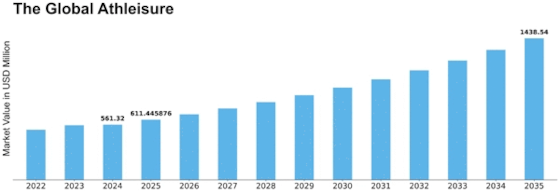

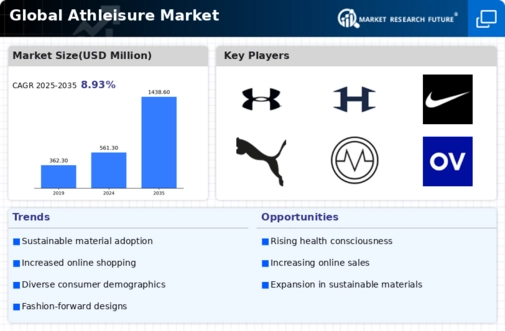
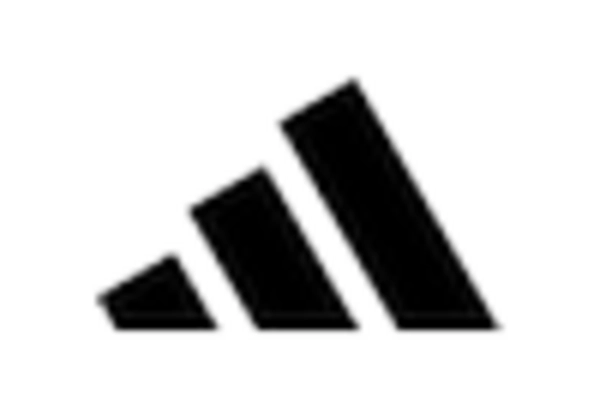
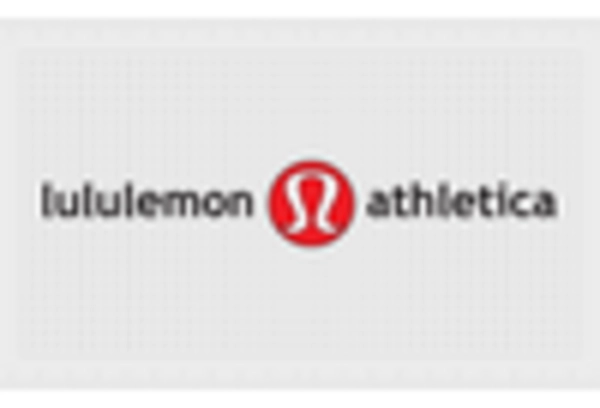
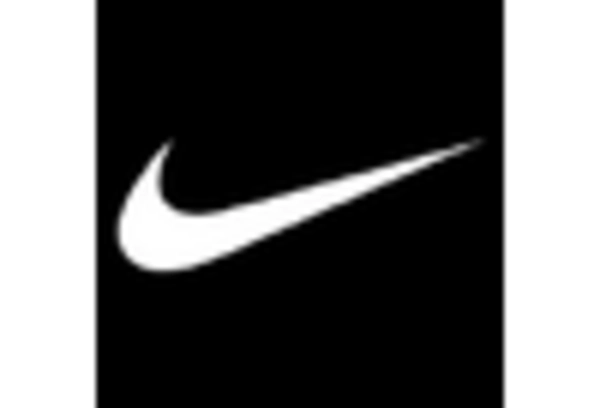
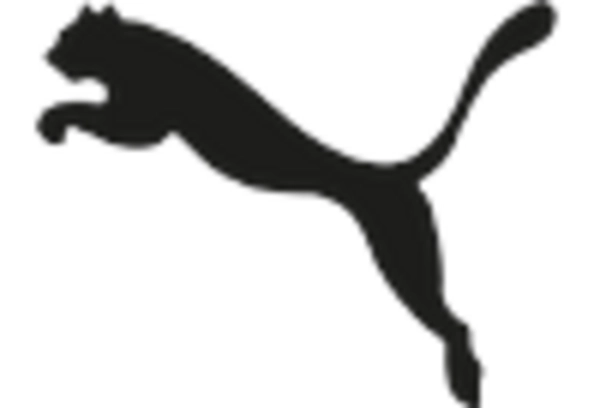
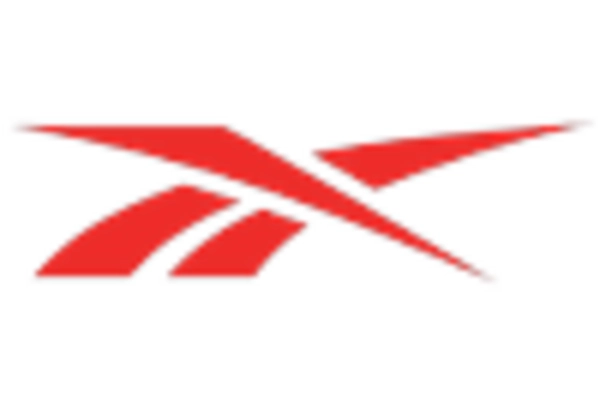
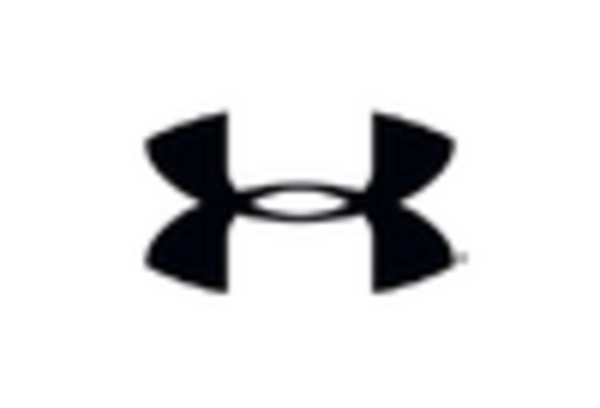









Leave a Comment